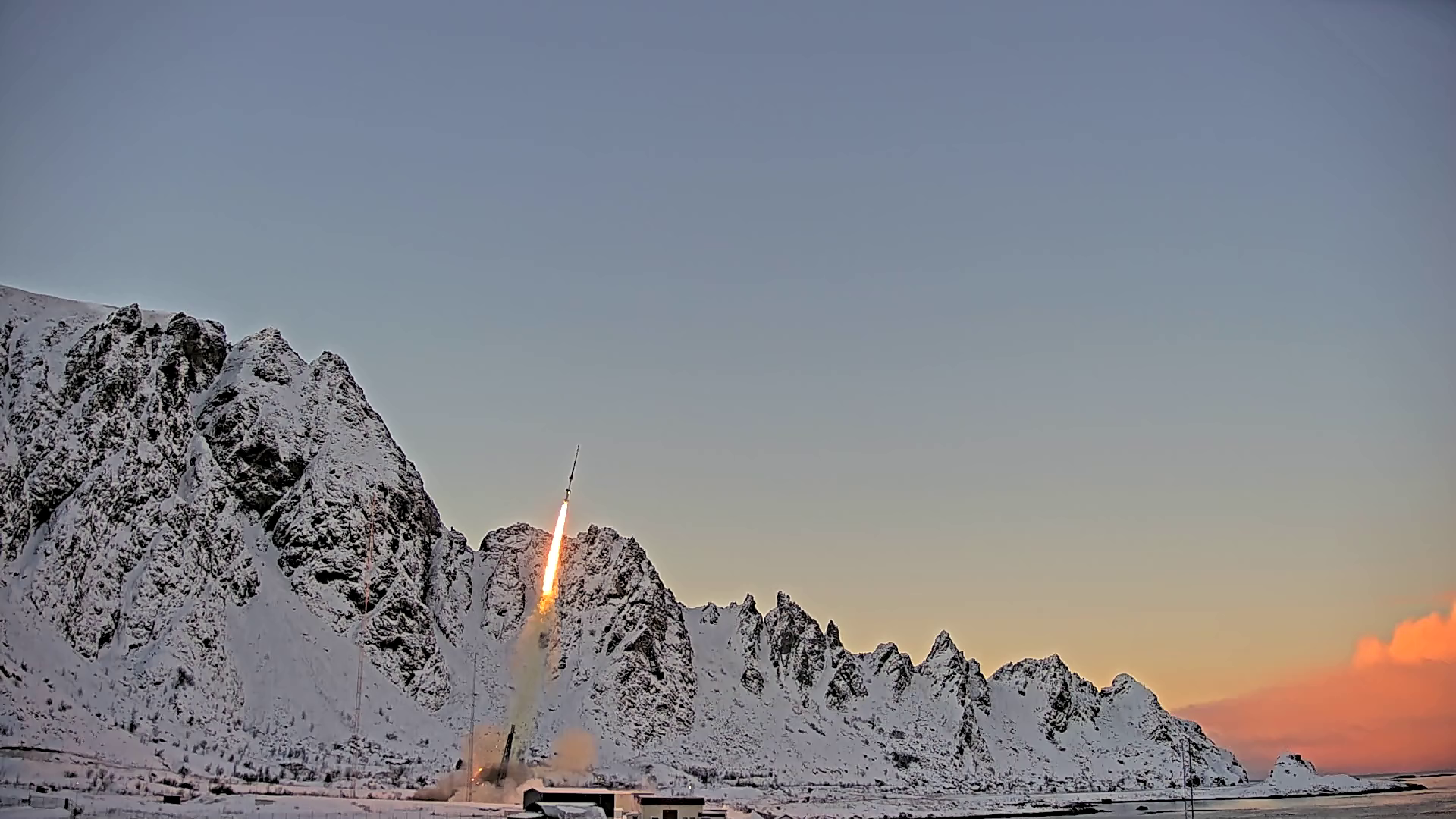NASA’s RENU-3 sounding rocket lifted off from Andøya Space on November 23rd to investigate a little-known phenomenon high above the Arctic.
RENU-3, a four-stage, state-of-the-art sounding rocket built by NASA Wallops, lifted-off at 09:52:00 UTC on November 23rd, in an attempt to investigate neutral upwelling in the arctic atmosphere.
“RENU-3’s scientific mission was to investigate so-called neutral upwelling close to the polar cusp region,” Blix explaines. “This upwelling creates a noticeable speed bump for satellites passing over the region.”
To perform its measurements, the rocket travelled through a dayside aurora. RENU-3 carried several instruments to measure the electric and magnetic fields, neutral and charged particle flows.
“Principal investigator for the mission was Dr Marc Lessard, from the University of New Hampshire,” Blix notes. “In addition to Andøya Space, the project includes the use of Kjell Henriksen Observatory, the SCANDI all-sky Fabry-Perot Interferometer and the EISCAT radar, as well as the SuperDarn radar, on Svalbard. These groundbased instruments provided the overview, while the rocket performed the detailed in-situ measurements.”
After completing its mission, the upper stage splashed down in the ocean north of Svalbard, inside the allocated danger area. “I want to congratulate the launch team with a successful mission. Two for two!” Blix finishes.
Watch the replay
The RENU-3 launch was streamed live on Andøya Space’s YouTube-channel.

